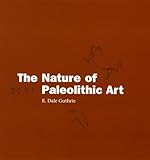[1] "World's oldest art found in Indonesian cave" http://www.nature.com/news/world-s-oldest-art-found-in-indon...
[2] http://www.amazon.com/The-Nature-Paleolithic-Dale-Guthrie/dp...
To the contrary, adults died in young adulthood in early prehistory. That is, surviving infancy and childhood still led to a harsh life with high mortality, with most human beings dying before age fifty. The last time this came up in a Hacker News thread, I forgot to refer to the better source[1] I know about Pleistocene human mortality. Looking up just now, I see that there is an even more current and specific source[2] that reports "An assessment of younger (20–40 y) versus older (>40 y) adult mortality distributions for late archaic humans (principally Neandertals) and two samples of early modern humans (Middle Paleolithic and earlier Upper Paleolithic) provides little difference across the samples. All three Late Pleistocene samples have a dearth of older individuals compared with Holocene ethnographic/historical samples. They also lack older adults compared with Holocene paleodemographic profiles that have been critiqued for having too few older individuals for subsistence, social, and demographic viability. Although biased, probably through a combination of preservation, age assessment, and especially Pleistocene mobility requirements, these adult mortality distributions suggest low life expectancy and demographic instability across these Late Pleistocene human groups. They indicate only subtle and paleontologically invisible changes in human paleodemographics with the establishment of modern humans; they provide no support for a life history advantage among early modern humans."
[1] The Nature of Paleolithic Art, by R. Dale Guthrie, a biologist who specializes in Pleistocene megafauna (including Homo sapiens), a fascinating book studded with references to the research literature.
http://www.amazon.com/The-Nature-Paleolithic-Dale-Guthrie/dp...
[2] Late Pleistocene adult mortality patterns and modern human establishment. (PMCID:PMC3029716)
http://europepmc.org/articles/PMC3029716/reload=0;jsessionid...
I would be delighted to see any references you have to clarify our understanding of this subject.
There was no writing anywhere during the earliest part of that transition, and if we saw statues of voluptuous female figures in some places (as we do) from that far back, it is at least as likely that the statues are porn as that they are representations of powerful goddesses. Archeology has historically systematically underestimated, perhaps for delicate readers, the amount of sheer erotic art that was produced by early human beings. The oldest surviving human art on at least two continents is crude drawings of vulvae, so the working hypothesis until additional evidence is found is that ancient human beings did not have a highly developed religion of "all-powerful mother goddesses" but rather incoherent local folk religions that didn't exclude teenage boys (the ancient artists of surviving ancient art were mostly teenage boys) from producing crudely drawn and crudely sculpted porn.
See The Nature of Paleolithic Art by R. Dale Guthrie (published by the University of Chicago press)
http://www.amazon.com/Nature-Paleolithic-Art-Dale-Guthrie/dp...
for much more about the evidence, as analyzed by an author who is a specialist in Pleistocene megafauna (including Homo sapiens) and himself a fine visual artist.
AFTER EDIT: It boggles my mind that I can link to a source in my comment and still have "readers" here ask what my source is for a factual statement in this comment. The source I linked is the source. (The book I link to is by a research scholar, and itself cites dozens of thorough sources about all aspects of human prehistory.) The book I link to is a lot better than any Wikipedia article. (I am a Wikipedian, painfully aware of how many good sources are missed when amateurs edit articles on Wikipedia.)
http://www.amazon.com/Chosen-Chaim-Penguin-Modern-Classics/d...
I got a LOT out of that when I reread it at least thirty years after reading it the first time.
Best nonfiction book full of amazing facts and insights into the human condition I didn't know before I read the book is The Nature of Paleolithic Art by R. Dale Guthrie.
http://www.amazon.com/Nature-Paleolithic-Art-Dale-Guthrie/dp...
There are bunch of others I could remember, but these two in particular took me by surprise by being much better than I would have guessed they would be when I first picked them up.
http://community.livejournal.com/radanthropology/2294.html
http://emlab.berkeley.edu/users/webfac/eichengreen/e210a_s09...
By the way, the Google searches I did reveal that this 1987 essay is often assigned reading in college classes.
After edit: seeing pg's post (same reply level as this one) reminds me of a very interesting book about pre-agricultural life, based on an extensive discussion of most of the available scholarly evidence.
The Nature of Paleolithic Art by R. Dale Guthrie
http://www.amazon.com/Nature-Paleolithic-Art-Dale-Guthrie/dp...
Guthrie is a paleozoologist, a bow-hunter, and an a visual artist, who uses his knowledge of Pleistocene times to draw a vivid picture of the life of our ancestors.
http://www.amazon.com/Nature-Paleolithic-Art-Dale-Guthrie/dp...
a book full of interesting information on how our ancestors lived.
http://www.press.uchicago.edu/presssite/metadata.epl?mode=sy...
http://www.amazon.com/Nature-Paleolithic-Art-Dale-Guthrie/dp...
The author is a paleozoologist who specializes in upper Paleolithic megafauna (which occasionally are found as frozen specimens with soft tissue preserved in the part of Alaska where he conducts his research) and is also an experience bow-hunter and expert visual artist. The book has an astounding bibliography listed literature in English and other languages about all aspects of human life in the Pleistocene epoch.
http://www.amazon.com/Children-Fail-Classics-Child-Developme...
The Nature of Paleolithic Art by R. Dale Guthrie
http://www.amazon.com/Nature-Paleolithic-Art-Dale-Guthrie/dp...
http://www.amazon.com/Nature-Paleolithic-Art-Dale-Guthrie/dp...
who is a professor of zoology specializing in Paleolithic fauna and an accomplished artist and bow hunter. He cites all the best primary research literature on Paleolithic life in the notes in his book. One fact Guthrie points out is that the lifespan for Paleolithic Homo sapiens was only forty years.
http://www.amazon.com/The-Nature-of-Intelligence/dp/B000PY4U...
or
http://www.amazon.com/Nature-Paleolithic-Art-Dale-Guthrie/dp...
or other books I've read on closely related subjects. This is a subject that deserves a lot of books, but one might as well read the better books.
http://www.amazon.com/Nature-Paleolithic-Art-Dale-Guthrie/dp...
(by a biologist who is also an artist), my favorite book of last year.


[1] http://www.amazon.com/The-Nature-Paleolithic-Dale-Guthrie/dp...